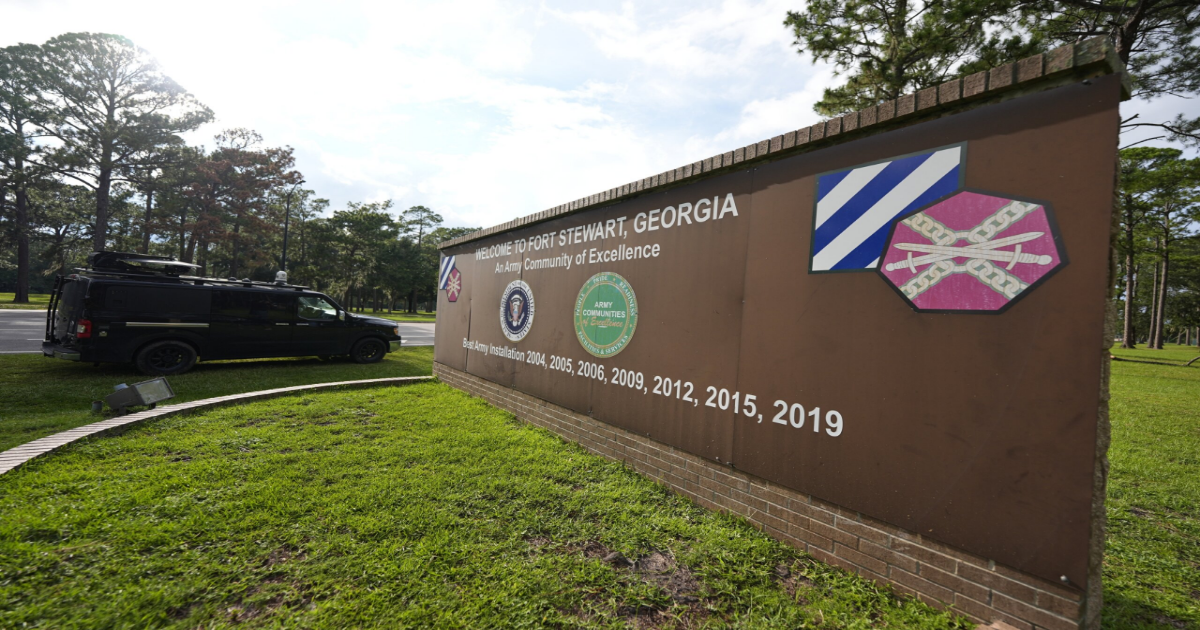A shooting that injured five soldiers at one of the country’s largest military bases on Wednesday has resurfaced questions about a long-standing army policy that largely prevents service members from carrying personal weapons on military installations.
Soldiers in the area who witnessed the shooting at Fort Stewart in Georgia “immediately and without hesitation” tackled the shooter to subdue him before law enforcement arrived, Brigadier Gen. John Lubas said at a news conference Wednesday.
But they didn’t have firearms to shoot back because of a policy first enacted decades ago to ensure safety by limiting armed members on army bases to military police. The suspect in the shooting, logistics Sgt. Quornelius Radford, used a personal weapon, Lubas said.
Questions about why soldiers didn’t have weapons were buzzing online after at least one video of the incident on social media appears to show service members in uniform running to safety amid a lockdown that lasted about an hour, instead of firing back at the shooter.
While some have questioned why many service members in the area during the shooting didn’t use weapons to defend themselves, others have questioned whether existing regulations do enough to prevent shootings on bases. The shooting is the latest in a growing list of violent incidents at American military installations over the years — some claiming upward of a dozen lives.
Experts say that there are reasons for long-standing regulations on military bases, despite their limitations.
Department of Defense policy in place for decades
Department of Defense policy prohibits military personnel from carrying personal weapons on base without permission from a senior commander, and there is a strict protocol for how the firearm must be stored.
Typically, military personnel must officially check their guns out of secure storage to go to on-base hunting areas or shooting ranges, and then check all firearms back in promptly after its sanctioned use. Military police are often the only armed personnel on base, outside of shooting ranges, hunting areas or in training, where soldiers can wield their service weapons without ammunition.
The federal policy leaves little room for local commanders to use discretion about how the policy is enforced. That means the regulation applies even in Georgia, a state with some of the most lax gun regulations in the country, where Fort Stewart is located.
Designed to protect national security
Robert Capovilla, a founding partner for one of the largest military law firms in the country, strongly believes in the Second Amendment. But he said that the strict firearm policies on military bases exist for a reason.
“A lot of these installations are involved in top-secret operations, dealing with top-secret information, and because of that you need a heightened security,” said Capovilla, a former military prosecutor and defense attorney. “You simply don’t want folks walking around a federal installation with personal weapons.”
He said he has traveled to “nearly every single major military installation” in North America for his work. Whenever he visits an installation, he said armed military police have a visible presence almost constantly on base. He added that he doesn’t believe Wednesday’s shooting could have been prevented if military personnel had been armed at the time.
Limitations to military gun regulation
Firearms on military bases are more regulated than most states in some ways, according to former military prosecutor and defense counsel Eric Carpenter. But he said that the limitations on gun control on military bases parallel gun policy debates in the public more broadly.
“You don’t forfeit all of your rights when you enter the military,” Carpenter said. “Outside of a military situation, the service member has just as much Second Amendment right as anyone else.”
For example, it could be fairly straightforward for a service member living off-base to bring a weapon onto the military installation, Carpenter said, because a senior commander can’t regulate gun ownership off base.
There is also scant legal ground for leadership to confiscate a gun when a service member is exhibiting signs of a mental health crisis or post-traumatic stress disorder, potentially posing a threat to themselves or others. In recent years, those gaps have come under more scrutiny because of mass shootings, he said.
“All those rules aren’t going to prevent someone from doing what the guy did today,” Carpenter said.
Copyright © 2025 The Associated Press. All rights reserved. This material may not be published, broadcast, written or redistributed.
